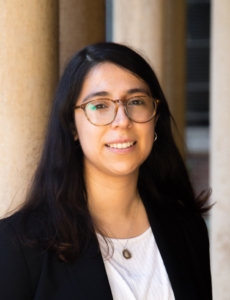By Fernanda Rojas Ampuero

Fernanda Rojas Ampuero
More than 25% of the world’s urban population today live in slums (UN-Habitat, 2020). A common policy response to high poverty and the large share of slum dwellers in developing countries has been to provide low-income housing in city peripheries and suburban areas. However, it is unclear whether these policies benefit recipients: Despite the improvement in housing quality, families lose in terms of proximity to jobs, social networks, and access to public goods, such as schools and health provision. There is little evidence on how moving to peripheral neighborhoods, rather than upgraded housing on site, affects the long-run outcomes of residents and their children.
In the paper titled “Sent Away: The Long-Term Effects of Slum Clearance on Children,” Fernanda Rojas Ampuero (former UCLA PhD student, current post-doc at Harvard) and Felipe Carrera (Reed College), study the long-term effects of moving to a high-poverty neighborhood on the earnings and schooling of children. To do so, they examine the impacts of a large-scale slum clearance and urban renewal program, the Program for Urban Marginality, that was implemented during the Chilean dictatorship between 1979 and 1985.
The program made all the slum dwellers become homeowners, but whereas some slums were upgraded into neighborhoods (non-displaced), other slum dwellers were forcedly relocated to suburban areas (displaced). The authors use this variation between types of intervention to estimate the effects of the forced displacement on children’s outcomes. To empirically estimate the effects, they combine archival records and administrative data.
The authors find negative effects for children aged 0 to 18: Compared with the non-displaced, displaced children earned on average 10% less per month over their life. This negative effect is not associated with lower employment but with the quality of employment: Displaced children were more likely to work in temporary jobs and without a formal contract. In addition, displacement reduced children’s educational attainment: A displaced child lost 0.5 years of education and was 12% less likely to graduate from high school relative to a non-displaced child.
What explains these results? Almost 70% of the variation on children’s adult labor earnings can be explain by the characteristics of the municipalities of destination. The authors find evidence that lower social cohesion, measured as neighborhood fragmentation, reduced children’s schooling. In addition, their adult labor earnings were also affected by worse labor market access, measured as access to public transportation at the time of the intervention.
This paper contributes to the literature on neighborhood effects, with the novelty that it is the first to look at a developing country and long-term outcomes. Although families received a new housing unit, the results of this paper document that forcing families to live in peripheral and low-quality neighborhoods has long-term negative consequences, and it sheds light on which aspects of neighborhoods matter.


